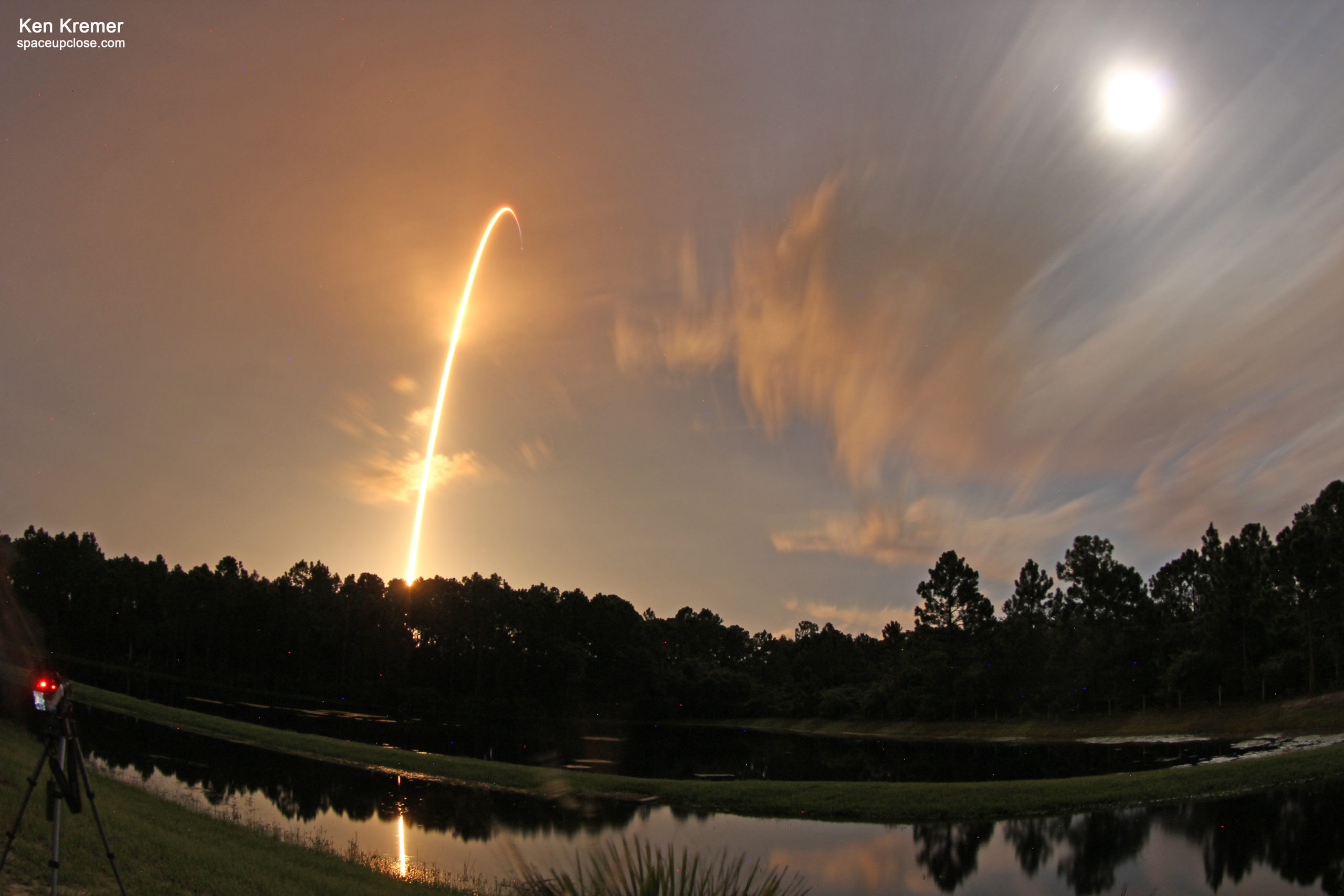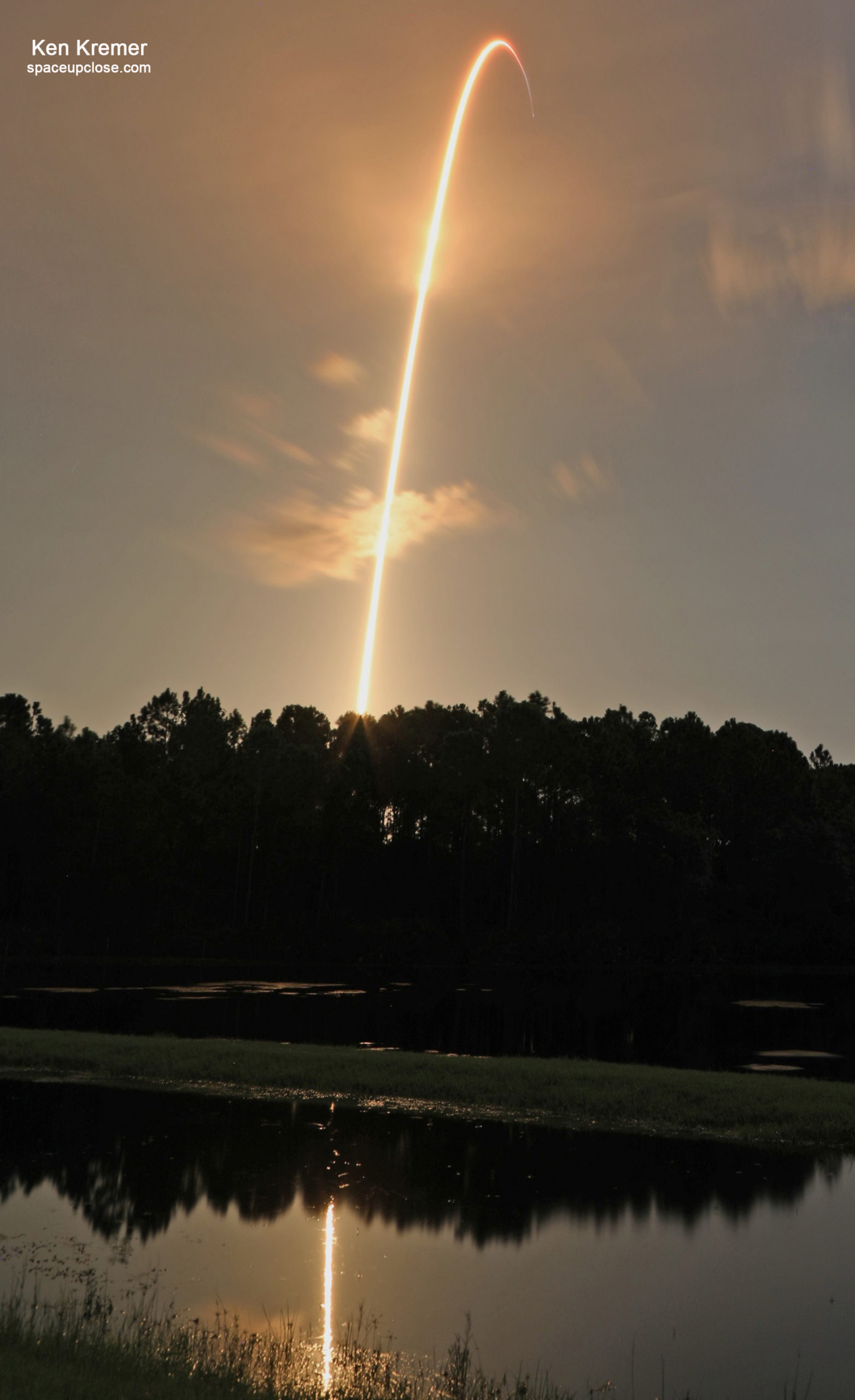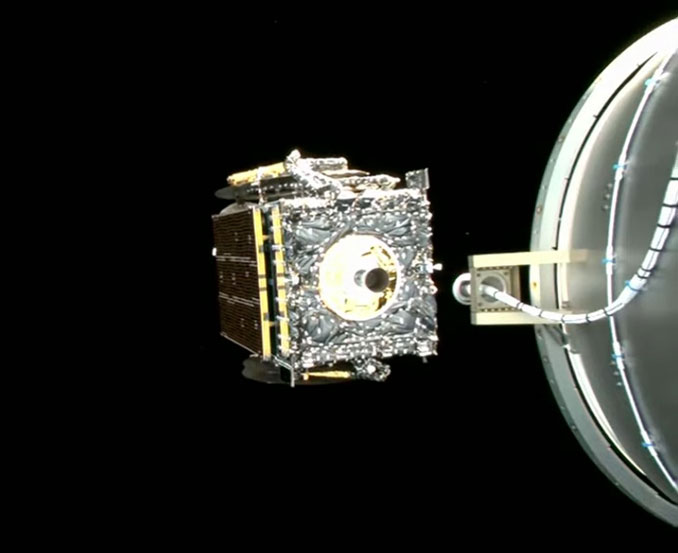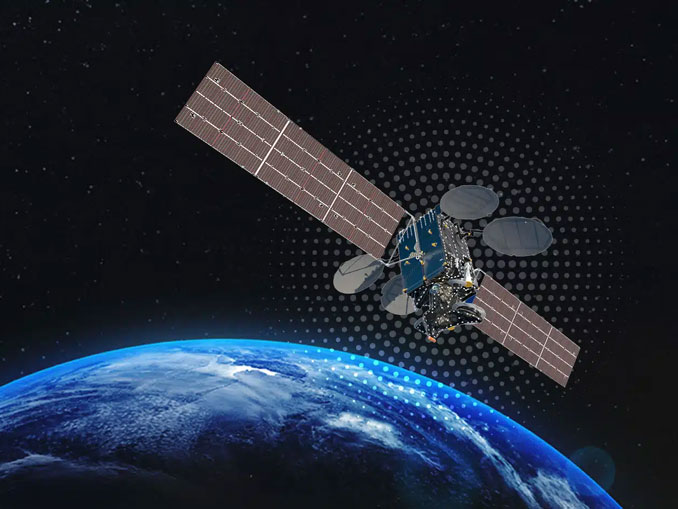
TITUSVILLE, FL – In the dead of night SpaceX launched a 6 times recycled Falcon 9 rocket from Florida’s Space Coast Thursday, Aug. 3 carrying a powerful 5 ton communications satellite destined for geosynchronous orbit for Luxembourg-based satellite operator Intelsat as part of a fleet refresh plan mandated by the Federal Communications Commission (FCC) to free up transmission space for 5G cellular networks.
The veteran Falcon 9 booster B1060.6 launched for the 6th time just a day after a rising nearly full supermoon moon the night before at 1:00 a.m. EDT (2305 GMT), Aug.3, from Space Launch Complex 40 (SLC-40) at Cape Canaveral Space Force Station in Florida about 45 minutes into the launch window on the Intelsat Galaxy G-37 mission into a geosynchronous transfer orbit (GTO).
Galaxy 37 was built by Maxar and is aimed primarily to provide TV relay service across North America.
The sooty Falcon 9 B1077.6 1st stage finally took flight ¾ of a hour later into the window due to a weather delay.

The 229-foot-tall (69-meter) Falcon 9 lifted off flawlessly with ignition of all 9 Merlin 1D engines performing perfectly and generating 1.7 million pounds of liftoff thrust soaring aloft on an easterly trajectory over the equator
Stages separated two and a half minutes later and the payload continued to orbit on the upper stage firing
The Galaxy 37 comsat was deployed as planned from the upper stage about 32 minutes after liftoff.

“Intelsat, operator of one of the world’s largest integrated satellite and terrestrial network and leading provider of inflight connectivity, announced the successful launch of Galaxy 37/Horizons-4 (G-37/H-4), setting a new record for the commercial satellite industry by sending eight geostationary satellites into space within 10 months,” Intelsat announced.
“G-37/H-4 separated from the vehicle at 1:33 a.m. EDT, and Intelsat confirmed its signal acquisition at 1:37 a.m. EDT.”
“When operations start later this year, G-37/H-4 will be positioned at 127 degrees West and deliver a wide range of services and coverage. The G-37 C-Band payload will provide North American capacity for television media and telecommunication network customers. The H-4 Ku-band payload will provide continuity for our mobility, network, and U.S. government customers and will be owned jointly by Intelsat and JSAT International, the U.S.-owned subsidiary of SKY Perfect JSAT Corp.”
Eight and a half minutes after its 6th liftoff B1077.6 nailed another perfect landing, its 6th, on the ‘Just Read the Instructions (JRTI) droneship that had been prepositioned some 400 mi (640 km) downrange.
Falcon 9’s first stage has landed on the Just Read the Instructions droneship pic.twitter.com/miU7GVqx3q
— SpaceX (@SpaceX) August 3, 2023
Thus its available for turnaround and another mission in the not to distant future.
Enjoy our photos taken for Space UpClose by Ken Kremer from Titusville, about 12 miles away.
My lead streak shot image was featured at Alive Universe – an Italian space news website:
https://aliveuniverse.today/immagine-del-giorno/7998-luna-e-laguna-falcon-9-buona-fortuna

“This launch completes our comprehensive Galaxy fleet refresh plan started about 10 months ago,” said Dave Wajsgras, CEO at Intelsat.
“This milestone is now a part of the 40-year Galaxy legacy – satellites our North American customers have relied on for decades. It also marks the 20-year anniversary of our JSAT partnership. This joint venture has allowed both companies to serve more customers in more places throughout the world.”
This was the sixth flight for the first stage booster B1077 supporting this mission, which previously launched 4 astronauts on the Crew-5 missaion for NASA to the ISS a year ago, followed by GPS III-6, Inmarsat I6-F2, a Starlink mission, and most recently the CRS-28 cargo resupply mission by SpaceX for NASA to the ISS on Jun 5, 2023
Thus the turnaround time from CRS-28 was 58 days 12 hours 28 minutes
Deployment of @Intelsat Galaxy 37/Horizons 4 confirmed pic.twitter.com/zUnEa6V4WW
— SpaceX (@SpaceX) August 3, 2023
Recycling 1st stages has enable SpaceX’s rapid launch cadence
Thus far Galaxy 37 counts as SpaceX’s 52nd launch on 2023 – keeping them on pace for well over 80 launches in 2023 – smashing last years record of 61 launches.
Watch Ken’s continuing reports about Artemis, SpaceX missions, SLS, Orion and NASA missions, SpaceX Crew and Cargo Dragons, SpaceX Axiom, JWST, DART, Lucy Asteroid mission, GOES, SpaceX Starlink, Commercial Crew and Starliner and Crew Dragon, Blue Origin and Space Tourism, and onsite for live reporting of upcoming and recent SpaceX and ULA launches including Crew 1 & 2 & 3 & 4 & 5 & 6 & 7, ISS, Solar Orbiter, Mars 2020 Perseverance and Curiosity rovers, NRO spysats and national security missions and more at the Kennedy Space Center and Cape Canaveral Space Force Station.
Stay tuned here for Ken’s continuing Earth and Planetary science and human spaceflight news: www.spaceupclose.com – twitter @ken_kremer – email: ken at kenkremer.com
Dr. Kremer is a research scientist and journalist based in the KSC area, active in outreach and interviewed regularly on TV and radio about space topics.
………….
Ken’s photos are for sale and he is available for lectures and outreach events
Please consider supporting Ken’s work by purchasing his photos and/or donating at Patreon
https://www.patreon.com/kenkremer
x



